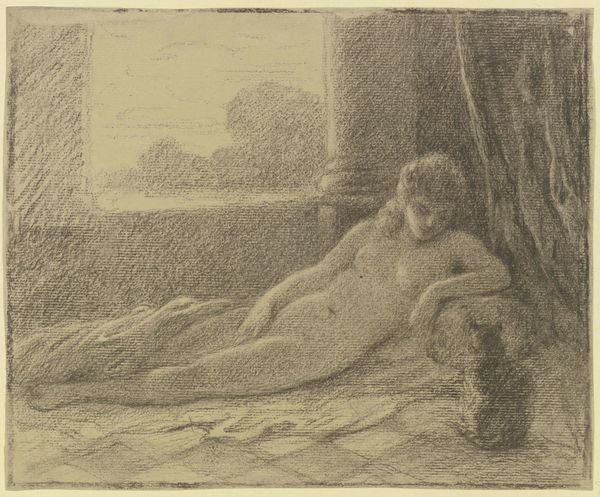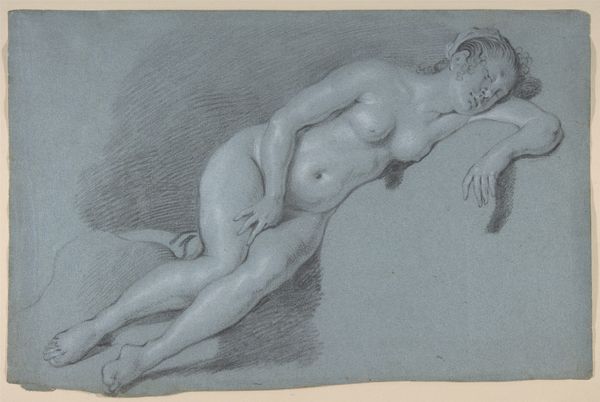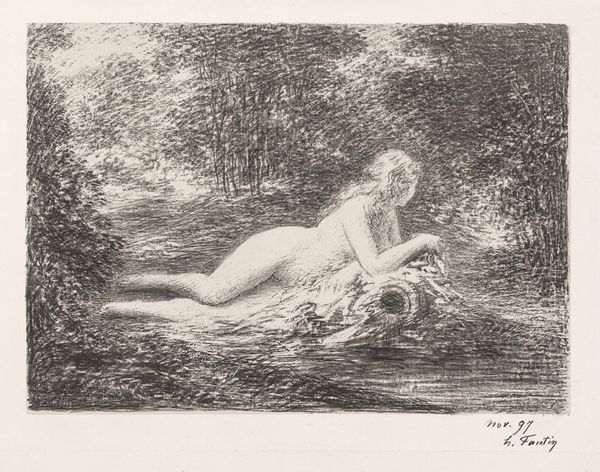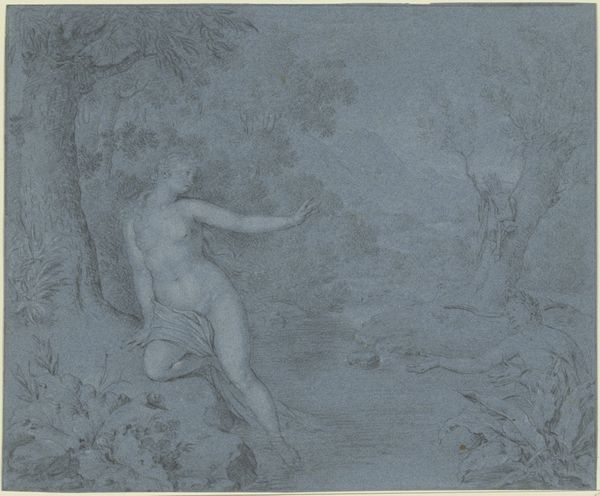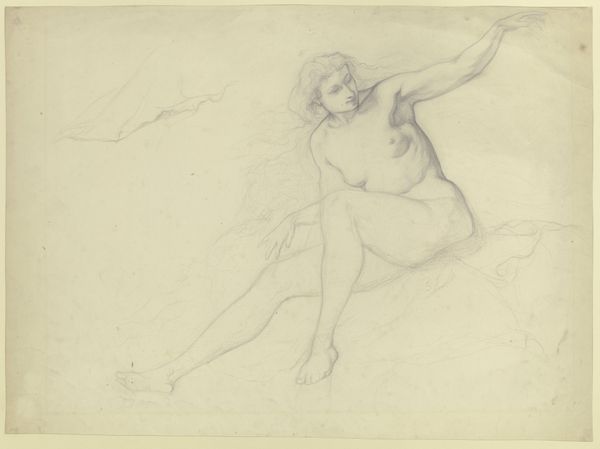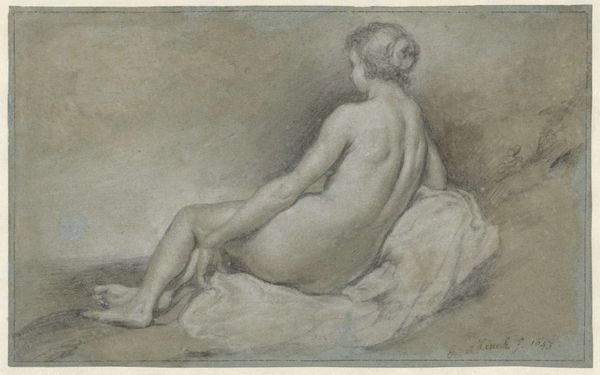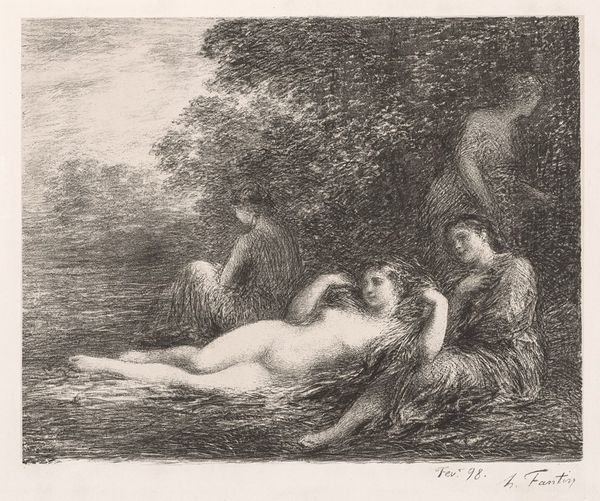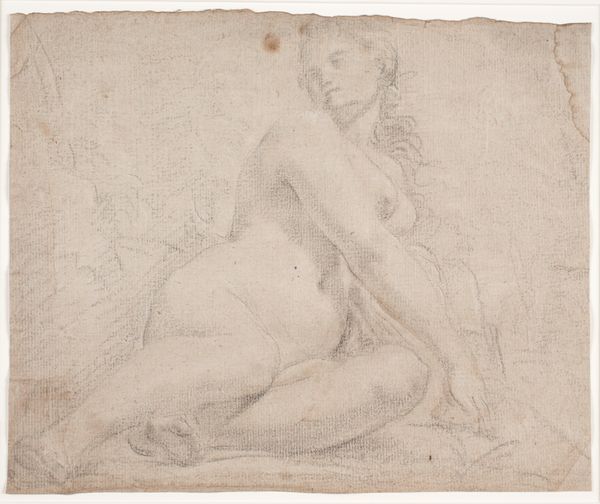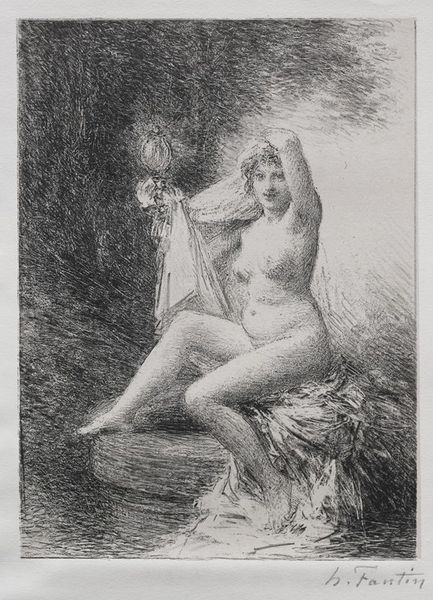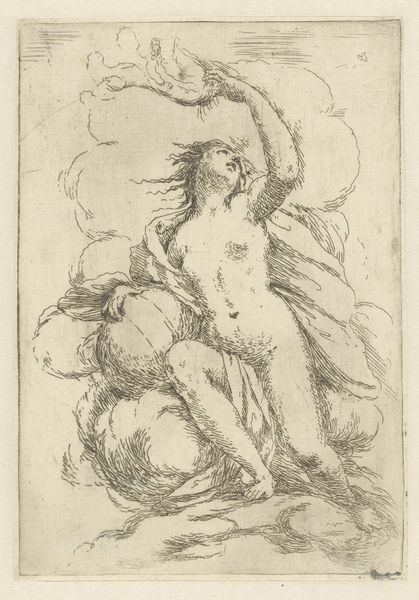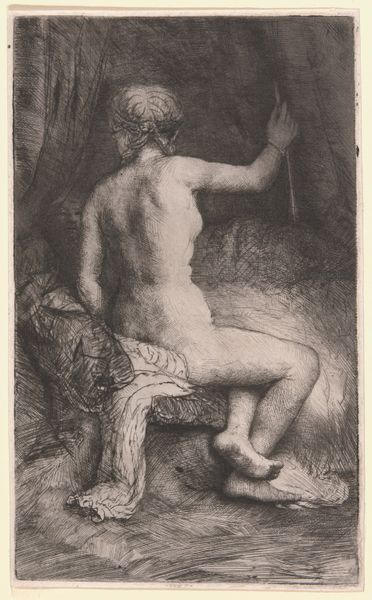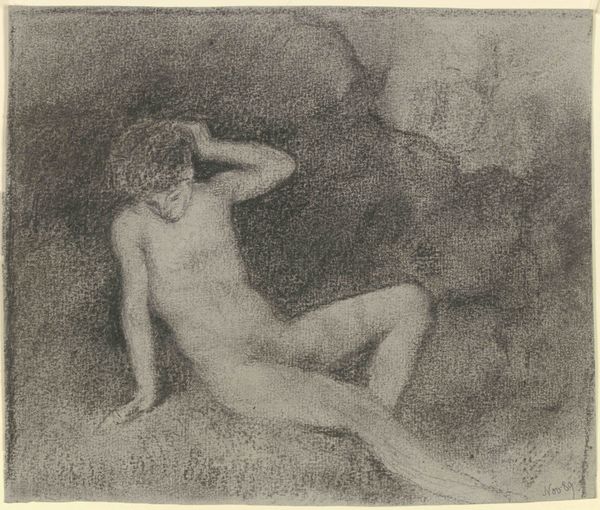
drawing, pencil
#
drawing
#
16_19th-century
#
impressionism
#
figuration
#
pencil drawing
#
pencil
#
academic-art
#
nude
#
realism
Copyright: Public Domain
Editor: So this is Otto Scholderer's "Danae," created in 1889 using pencil on paper. It's a delicate drawing, and the soft shading gives it a dreamy, almost ethereal quality. How do you interpret this work, especially considering the subject matter? Curator: Considering the prevalent social and political context, Scholderer's "Danae" appears to engage with complex notions of femininity and mythology. This isn't merely a depiction of a classical myth; it's an intersectional commentary. The female nude, often objectified, is here seemingly presented with agency, reaching for something beyond her immediate surroundings. Do you think Scholderer subverts the male gaze by presenting Danae as an active participant in her narrative rather than a passive recipient of divine intervention? Editor: That's a compelling point. I hadn’t considered her agency in the composition. It challenges the traditional interpretation of Danae as simply a victim of Zeus. Curator: Precisely! Let's examine the period: The late 19th century was a time of significant social upheaval and nascent feminist movements. "Danae" challenges patriarchal structures by depicting female desire and autonomy, inviting viewers to consider the narratives imposed upon women and question their roles in society. How does the work resonate with broader debates surrounding gender and power of the time? Editor: I can see how Scholderer’s work, while seemingly traditional, offers a more nuanced view of women's position. The themes of desire and freedom definitely connect with the era's shifting social landscape. Curator: Exactly! Understanding these interwoven layers—mythology, social commentary, and artistic technique—enables us to perceive the work as a catalyst for dialogues about power, agency, and representation. Editor: I hadn't considered it so deeply before. Seeing "Danae" through this lens really brings out a complexity I missed initially. Curator: That's the beauty of art: its ability to reveal new meanings and perspectives as we engage with its historical and social context.
Comments
No comments
Be the first to comment and join the conversation on the ultimate creative platform.
